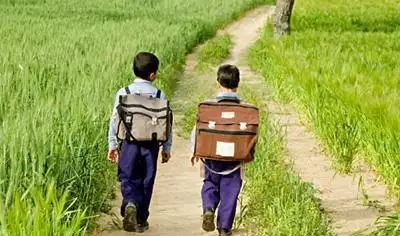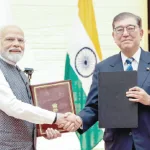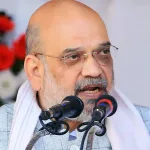For the large majority of the population living in rural areas, education is highly dependent on government-run or aided schools and non-governmental organisations. But remote areas still face various barriers that directly impact the states literacy rate. About 72.6 % of Jammu and Kashmir population lives in villages and most of them get educated in remote areas. Small remote areas pose several challenges for students due to a lack of resources and limited learning opportunities. The resource constraints hinder the academic stimulation required for the students’ Physical, cognitive, intellectual, and social development.
The National Education Policy 2020 put emphasis on digital learning as an alternative to the conservative classroom model but implementing this in remote areas is challenging. The majority of students need to cover up extensive distances on foot to attend classes with no transport facility. Such circumstances often demotivate them to be present at school on regular basis. Furthermore, students in these villages don’t have access to proper classrooms, playgrounds, and even basic toilets and drinking water facilities. It has been observed that most of the students come from families with scanty income, so it becomes very difficult for them to feed a family of 4 or 5 people. Therefore, they are asked to support the family’s earning members in making extra income instead of going to school and study.
Given the lack of funding and resources, most schools lack enough teachers. Furthermore the teachers which are appointed in these remote areas are hampered with unmanageable employment and activities. The working conditions are not great and satisfactory for both students and teachers as well. Such things have huge impact on the dedication of the teacher. Students from remote areas don’t get good access to a good learning environment, infrastructure, facilities, and mentors. So, they face several challenges during their high school and later.
The problems become worse as these students enter in college education. They face multiple challenges like, Lack of confidence, Poor communication, Poor technical skills, Lack of exposure, Lack of direction and the main challenge for these students, in my view, is the inability to express their thoughts freely. Their minds are not cultivated in a good manner. They take education just to read books and memorizing the concepts, which creates a huge gap in their knowledge. It is hoped that with the government’s support, corporate-NGO partnerships like ADP, Pratham and through digital technologies such challenges will be addressed. Some of my friends have become teachers in these schools and I feel really proud of their contributions to the most important segment of our society.
Most of the rural students are facing issues like Financial Crises, lack of good institutes in their vicinity, Lack of guidance, Lack of infrastructure and quality faculty, work is not monitored by authorities which lead to a poor quality of education and low self-confidence among students to attend school.
To bring the quality education in rural India we need to adopt following measures to boost the morale of students.
- By adopting modern teaching technologies.
- By providing scholarships.
- Proper infrastructure.
- Encourage free education.
- Set up more school in remote areas.
- Install libraries at Block wise.
- Well operational play grounds.
- Proper drinking facilities.
- Proper transport facilities.
- Proper monitoring of institutes.
Modern technologies can play an important role in imparting education. We are living in a global village and it is necessary to remain updated with the current technology to gain momentum in the field of modern education. Also, the focus of education should be on conceptual learning not on rote learning so that the people living in remote areas must use the applications of these new technologies. While most of these areas need transformative changes, which will take time but technology can make it ease like the increased use of smartphones in remote areas, e-learning platforms can be accessed easily. We can achieve best courses from the best educators. E-libraries for research material can get them connected with the most prominent teachers of particular subjects in an instant. In these unprecedented times, the amalgamation of technology with education holds great promise.
As per the census the literacy rate of India is 77.7%, but it is different in rural, urban and remote areas of India. There is a wide gap between the literacy rate of urban, rural and remote areas of India. To minimize this gap we need to focus on grass root level education particularly the remote areas of Jammu and Kashmir where we need community involvement like engaging the local community is essential for the success of any education initiative. Working with local leaders, parents and community members to understand their specific needs and challenges can help tailor educational programs to the local context.
By implementing these strategies, it is possible to promote a good education in remote areas of Jammu and Kashmir, thereby empowering the residents of these regions and contributing to their overall development.
(Author is Doctorate in Sociology and the recipient of National level Young Social Scientist award (jan-2018). Feedback: [email protected])








